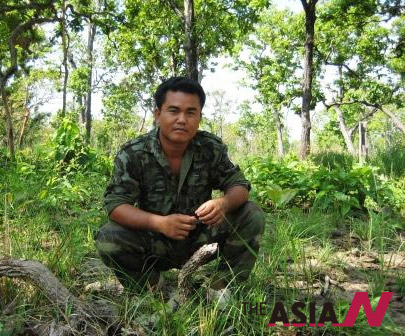
Tragic life story of Akira, a winner of Manhae Prize

*This is written by Bill Morse(International Project Manager for CSHD) who helps Akira.
THE EARLY YEARS
He prefers to be called by his full name: Akira (or Aki Ra). He’s had many names in his life. He received this one from his Japanese friends when he became a deminer in his early 20s. He didn’t even know when he was born until a few years ago when his biological family found him.
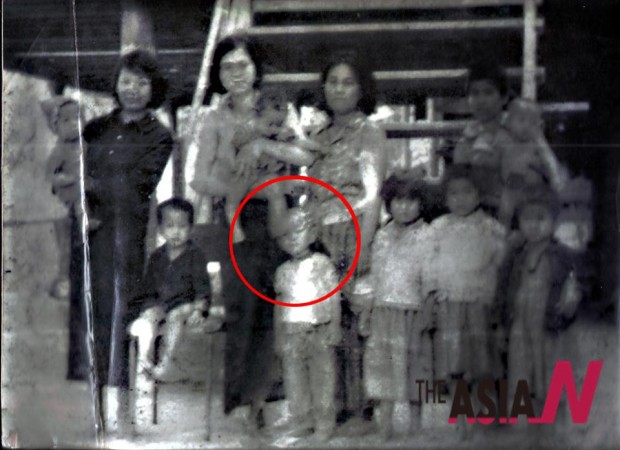
He was born in a small village in Cambodia in 1970. At the age of 5 he was taken from his family and raised in a Khmer Rouge village. Ma Yeourn, a woman soldier, took him into her home, and she became the only mother he really knew.
At the age of 10, the Khmer Rouge gave him a gun and told him he was now a soldier. He was asked one time if the guns frightened him. He smiled and said “No. I was 10. This was an adventure.” When asked about the landmines he was ordered to carry and place randomly around the countryside he admitted they scared him a lot. “When I saw them blowing up my friends and the animals I knew they were bad.”
He fought for the Khmer Rouge until he was captured by the Vietnamese army at the age of 13. He then fought with the Vietnamese until they left Cambodia in 1988/89. He was then forced to join the Cambodia army and fought with them until the UN came in the early 90’s and they showed him how to clear landmines. Until then he didn’t know the concept of peace and just thought war was the natural way to live for everyone.
(While being a soldier fighting for the Vietnamese, he was in a gun battle against a Khmer Rouge unit. Taking careful aim at the enemy, he realized the soldier shooting back at him was his Uncle Ren (pronounced Rain). He shot above him, below him, and to the side. He waved at him to try and get his attention. The battle continued and Ren killed some Vietnamese soldiers near Aki Ra. When his Vietnamese commanders asked him why he didn’t shoot this man, he pleaded illness and was sent to see the doctor. Years later, when his uncle came to work with him, they laughed about their near-death battle.)
THE END OF WAR
When he went to work for the UN he had never seen a modern building. He had to touch the side of one painted building to find out what it was. He thought it might be elephant skin. He rode in his first helicopter, where he could see out the glass front for miles. He was sent to school. At first this frightened him. The Khmer Rouge often sent people to school, a euphemism for the killing fields. No one ever returned from school. He was taught the meaning of peace and found a place for the first time where he didn’t need to sleep with a gun at his side.
![Making my country safe[1]](http://www.theasian.asia/wp-content/uploads/2012/08/Making-my-country-safe1-620x409.jpg)
He decided this would become his “trade”.
Aki Ra returned to the villages where he had fought as a soldier, looking for the landmines he had planted, and for landmines planted by the many other soldiers who had fought in his country. He was doing penance for the past. Villagers joined him in the work to make the country safer.
Sometimes the mines he found had been planted by the Khmer Rouge. Sometimes they had been laid by the Vietnamese; sometimes by the Cambodian Army, and sometimes by other groups. The war had begun in the 1960s. It didn’t end until the death of Pol Pot in 1998.
The landmines he found came from Russia, China, the US, Vietnam, Czechoslovakia, East Germany, Singapore, and many other countries around the world. While his country had never declared war on anyone, it seemed the world had declared war on Cambodia.
Aki Ra didn’t have a lot of tools to work with when he was demining, so he made his own. He didn’t have explosives to blow up the mines and unexploded ordinance he found, so sometimes he had to take them apart by hand. He would probe the ground for them with a stick, tapping their sides and digging them up with a gardening trowel. He thinks he has probably cleared over 50,000 mines and UXOs in his life. He has never had an accident, nor has anyone he has trained ever been injured.
THE LANDMINE MUSEUM
When he defused these mines he brought many of the empty casings and shells home, where tourists began to come to see this new “landmine museum”. He charged them $1 to visit and used the money to clear more landmines.
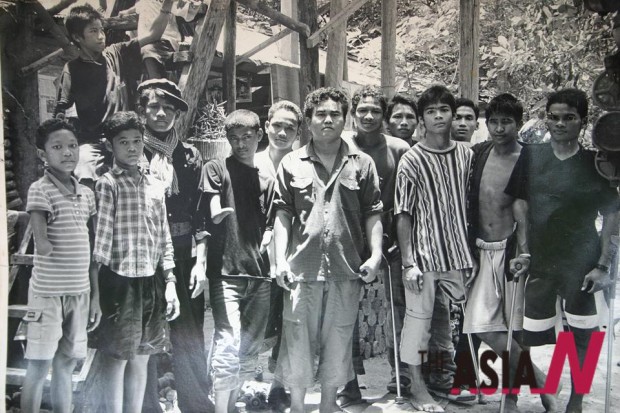
While he was clearing mines in small villages, mostly in the north and the west of the country, he found wounded, orphaned and abandoned children, landmine victims in need of help. He began bringing them to his house near Siem Reap, where he and his wife Hourt cared for them, made sure they went to school, were fed and clothed.
In 2003 a Canadian charity was founded to help Akira build a new Museum and a better home for the many kids who had come to live at Akira and Hourt’s home. The Museum was moved to its current location in 2007. Funding was provided by the Cambodia Landmine Museum Relief Fund in Canada.
Cambodia has reduced the number of landmine victims from several thousand a year to 211 in 2011. The children’s home is called a Relief Center, and the children who live there today are not only landmine victims, but children who contracted polio, were born with physical disabilities, were abandoned, orphans and come from poor families. The Relief Center is not a rehabilitation center.
There are excellent rehabilitation centers with highly qualified staffs nearby. The Relief Center is a home for at risk children from small villages. The children, who live there are loved, cared for, and educated in public schools as well as a school on site. Their medical needs are met, they are clothed, they have a playground, a computer lab, a library, art program and when they finish high school they are given a university scholarship by a sister charity.
Today there are 38 children who live at the Relief Center. Unlike many orphanages in Cambodia, the Relief Center is closed to the public. The children are not exhibits and are not required to perform for tourists. The Relief Center is their home, a place where they can be themselves.
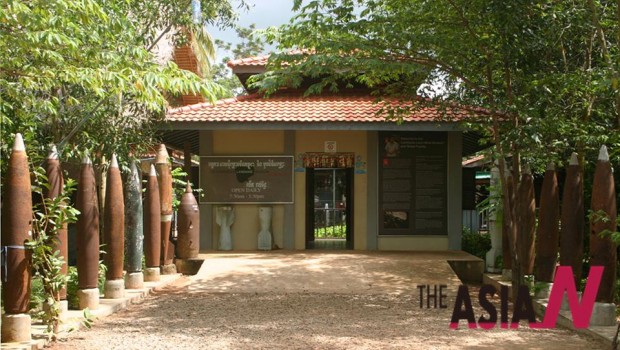
The Landmine Museum raises enough money from ticket sales (a modest $3 per person) and from donations left by tourists to meet all the needs of the children in its care. Aki Ra wants to increase the number of children at the Relief Center to 50 in coming months. All will be done with funds raised at the Museum.
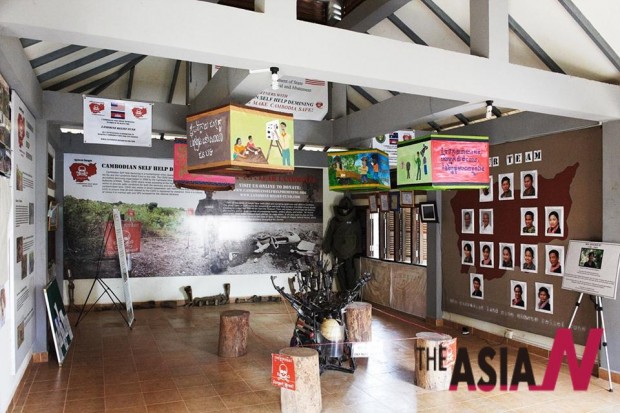
Aki Ra established his Landmine Museum for several reasons:
He wanted to tell the world that no matter who you are, where you come from, or what your background is, you can make a difference.
He wanted to tell the world about the horror of landmines and the aftermath of war. (There are an estimated 5,000,000 landmines left in Cambodia alone. There are over 100,000,000 left in dozens of countries around the world). In 2011 there were over 4,000 landmine injuries reported. Many people in small villages never report a death or an injury.
He lastly, and most importantly, founded the Landmine Museum to care for the dozens of at-risk children who call it home.
In the future the Museum hopes to provide continual funding for Aki Ra’s demining NGO. He would also like to found another village, for elderly villagers who have no family to care for them. All this funding would come from ticket sales and donations at his museum.
CAMBODIAN SELF HELP DEMINING
Aki Ra cleared landmines, by hand, alone, until 2005 when the government required anyone doing this dangerous work to get a government license. They wanted to make sure that the work was being done to international safety standards. The money to support his clearance came from entrance fee the Museum charged, from the Landmine Relief Fund, an American charity, established in 2003 to support work being done to make Cambodia safe, and from the Vietnam Veterans Mine Clearing Team from Australia.
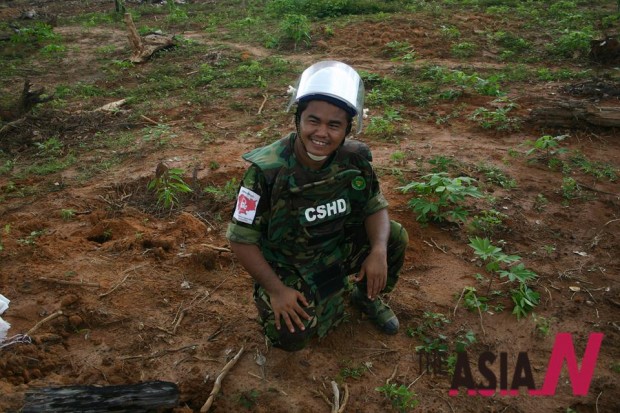
In 2006 Aki Ra stopped clearing landmines, as he had no license.
In 2007 he decided to get a license for his own demining operation. He wanted to call it Cambodian Self Help Demining (CSHD). It would be an all-Cambodian NGO. Run by Khmers….for Khmers. After a great deal of work, the license was issued in 2008 and CSHD was allowed to clear landmines.
CSHD clears mines in small villages across Cambodia. It clears mine fields that are usually 5 hectares in size or smaller. It calls them ‘low priority’ villages. They are the ones at the bottom of the list to be cleared. With perhaps 5,000,000 mines left, some say it could take 150 years to make the country safe.
![WE ARE CSHD[1]](http://www.theasian.asia/wp-content/uploads/2012/08/WE-ARE-CSHD1-620x465.jpg)
CSHD is one of 4 NGOs clearing in Cambodia today.
It costs CSHD $17,000 a month to field a team of 30 deminers. CSHD is currently funded by the by the Landmine Relief Fund from the United States with help from the United States Department of State and the Vietnam Veterans Mine Clearing Team from Australia. Additional funding also comes from the Landmine Museum – if it is available.
FAMILY
In 2009 Aki Ra’s wife, Hourt, died. She had lost a child at 4 months and died from complications. She was 28.
In 2010 Aki Ra’s adopted mother Ma Yeourn died from complications from diabetes. She was 62.
In July of 2012, Aki Ra’s Uncle Ren died from complications from diabetes. He was 54.
A few years ago Aki Ra’s biological family found him. His brother Im, 15 years his senior works in Phnom Penh. He often visits the Museum and tells Aki Ra stories about his biological parents who both died in a Khmer Rouge village north of Phnom Penh. It is thought his mother died from a snake bite, and his father starved to death. But millions died and no records were ever kept.
Aki Ra has 3 children. His 2 sons are aged 6 and 10. His daughter is 4 and is the image of her mother.
I asked Aki Ra one time what his goal was. He said “To make my country safe for my people.” I asked him how long he would continue to clear mines, and he looked at me strangely and said “Until my country is safe for my people.”



One thought on “Tragic life story of Akira, a winner of Manhae Prize”